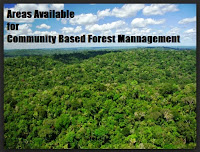EFFECTS OF
POLLUTANTS
by Anton
Antonio
May 4, 2015
Pollution
could take place everywhere in and on our planet --- land, air and sea. “Environmental
pollution is defined as the introduction of contaminants into the natural
environment that cause adverse changes. It is the presence in or
introduction into the environment of a substance or thing that has harmful or
poisonous effects.” (Antonio, 2014) “Fresh
water sources such as esteros, urban waterways, streams, rivers and lakes are
traditionally being used as dumping sites for effluents (meaning: Liquid waste
or sewage discharged into a river or the sea) from all sources (industrial and
residential). Many of these water systems, contain high concentrations of
toxic effluents, very high BOD and low DO, are considered biologically
dead.” (Antonio, 2014)
Pollution could also be tangible and intangible. “One of the less regarded forms of pollution
is noise pollution. Noise pollution, by definition, is the disturbing or
excessive levels of noise that may harm the activity or balance of human or
animal life. Medical research has proven that high levels of noise may
contribute to cardiovascular problems, rise in blood pressure and coronary
artery disease among humans.” (Antonio,
2014) There are over 70,000 synthetic chemicals in commercial
use and application at present. A
majority of these chemicals have harmful effects to humans. Examples of pollutants are particulate
materials, lead, nitrogen oxide, carbon monoxide, VOC and sulphur dioxide.
Pollutants
have ACUTE EFFECTS on organisms, including human organisms, which can
immediately be observed upon exposure.
The acute effects of pollutants largely depend on (a) the properties of
the chemical pollutant; (b) the concentration of the chemical pollutant; and,
(c) the length of time of exposure. The
response to chemical pollutants could
range from skin rashes, to nausea or even death. On the other hand, some effects are hardly
noticed even if exposure is on a day-to-day basis and for a longer period of time. These are called the CHRONIC EFFECTS of
chemical pollutants. A combination of
chemical pollutants can also create what is commonly referred to as the
SYNERGISTIC EFFECT. Synergistic effect
occurs when chemical pollutants interact with each other or react to other
substances. The effect of these chemical
pollutants in synergy, also called a bioaccumulation process, is very hard to
detect.
Not all
chemical interaction or reaction to other substances of chemical pollutants is
harmful. In rare instances these are
also helpful to the environment… but, again, these occurrences are very
few. We could only wish that good and
healthy effects are the only effects of pollutants.
Just my
little thoughts…
(Please
visit, like and share Pro EARTH Crusaders on Facebook or follow me at http://antonantonio.blogspot.com/)
REFERENCES:
Antonio, A.
C. (2014). “Pollution”. Retrieved May 4, 2015 from http://antonantonio.blogspot.com/2014/09/pollution.html
Antonio, A.
C. (2014). “Environmental Noise”. Retrieved May 4, 2015 from http://antonantonio.blogspot.com/2014/11/environmental-noise.html
Antonio, A.
C. (2014). “Biologically Dead”. Retrieved May 4, 2015 from http://antonantonio.blogspot.com/2014/10/biologically-dead.html
Antonio, A.
C. (2014). “The Problems of Philippine
Urban Centers”. Retrieved May 4, 2015 from http://antonantonio.blogspot.com/2014/04/the-problems-of-philippine-urban-centers.html

















